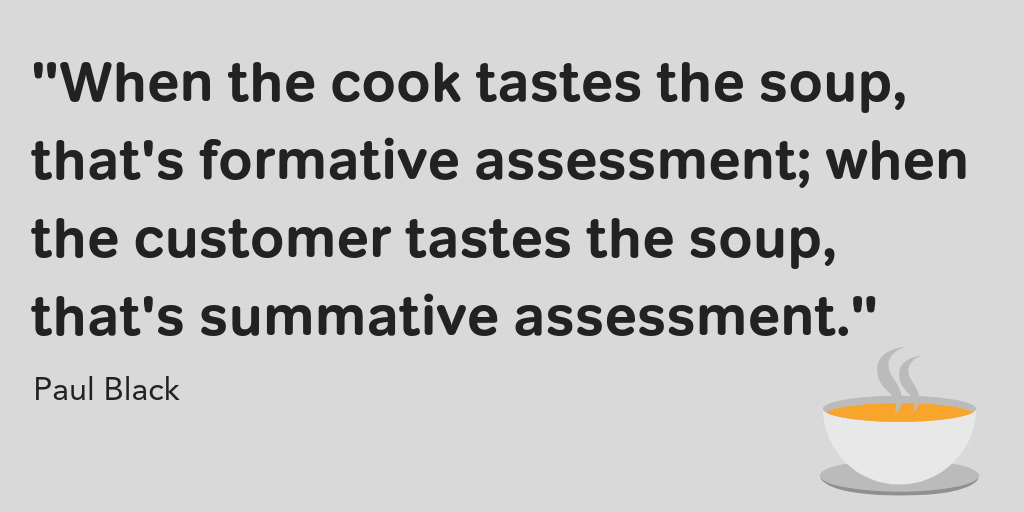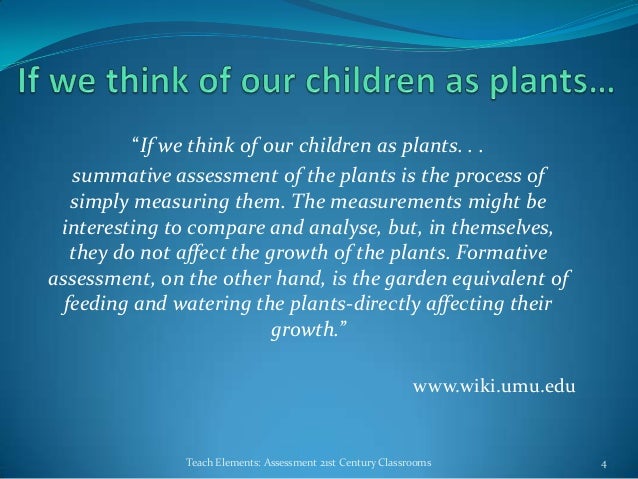Summative assessment, summative evaluation, or assessment of learning[1] is the assessment of participants where the focus is on the outcome of a program. This contrasts with formative assessment, which summarizes the participants' development at a particular time. Summative assessment is widely taught in educational programs in the United States.[citation needed] Scriven claims that while all assessment techniques can be summative, only some are formative.[2]
- Summative Assessment.com Evaluation
- Summative Assessment Definition
- Difference Between Formative And Summative Assessment
- Summative Assessment-2
- Summative Assessment Definition Teachers

What is Summative Assessment? - Answered - There are lots of different kinds of assessments you may hear being spoken about in educational settings. One of these are summative assessments. Summative assessment is sometimes called assessment of learning and is a formal method to evaluate learning by comparing learning to a standard or benchmark This is typically at the end of a unit, module. Summative assessment evaluates student learning, knowledge, proficiency, or success at the conclusion of a unit, course, or program. Summative assessments are almost always formally graded and often heavily weighted (though they do not need to be). Summative assessment can be used to great effect in conjunction and alignment with formative.
The goal of summative assessment is to evaluate student learning at the end of an instructional unit by comparing it against a standard or benchmark. Note, 'the end' does not necessarily mean the end of an entire course or module of study. Summative assessments may be distributed throughout a course, after a particular unit (or collection of topics) has been taught, and there are advantages to doing so. In many disciplines in the UK Higher Education sector, there has been a move away from 100% end of course assessments, to a model where summative assessments are distributed across a course, which helps to scaffold students' learning. Summative assessment usually involves students receiving a grade that indicates their level of performance, be it a percentage, pass/fail, or some other form of scale grade. Summative assessments are weighted more than formative assessments.For example-test after 6 months in schools, Semester exams in B. Ed after each 6 months.
Summative assessments are often high stakes, which means that they have a high point value. Examples of summative assessments include: a midterm exam, a final project, a paper, or a senior recital.
Instructional design[edit]
Summative assessment is used as an evaluation technique in instructional design. It can provide information on an intervention's efficacy (its ability to do what it was designed to do). Summative evaluation judges the worth, or value, of an intervention at its conclusion.
Summative Assessments are usually given at the end of a unit.
Summative Assessment.com Evaluation

Summative Assessment Definition

Educator performance[edit]
Summative assessment can be used to refer to assessment of educational faculty by their respective supervisor, with the object of measuring all teachers on the same criteria to determine the level of their performance. In this context summative assessment is meant to meet the school or district's needs for teacher accountability. The evaluation usually takes the shape of a form, and consists of check lists and occasionally narratives. Areas evaluated include classroom climate, instruction, professionalism, and planning and preparation.[3]
Methods[edit]
Methods of summative assessment aim to summarize overall learning at the completion of the course or unit.

- Questionnaires
- Surveys
- Interviews
- Observations
- Testing (specific test created by the teacher or establishment made to include all points of a unit or specific information taught in a given time frame)
- Projects (a culminating project that synthesizes knowledge)
See also[edit]
References[edit]
- ^[1]
- ^R. W. Tyler, R. M. Gagne, & M. Scriven (Eds.) (1967). 'The methodology of evaluation'. Perspectives of curriculum evaluation. Chicago, IL: Rand McNally. pp. 39–83.CS1 maint: multiple names: authors list (link) CS1 maint: extra text: authors list (link)
- ^Glickman, C.D., Gordon, S.P., & Ross-Gordon, J.M. (2009).Supervision and instructional leadership: a developmental approach Allyn and Bacon, Boston, MA.
When most think of the word “assessment” they envision the large, high-stakes exams that caused stress and sleepless nights while a student. In actuality there are many different types of student evaluation—the most common form being summative assessment.
What is Summative Assessment?
While formative assessment is the evaluation of learning as it takes place (assessment for learning), summative assessment is the practice of evaluating what a student has learned at the end of a given period of time (assessment of learning). As content is taught within a course, educators should evaluate how well the information is absorbed and retained—this is where summative assessment becomes useful. By assessing students at the end of a module, course, or even entire program curriculum, summative assessment provides faculty insight into how well their students have mastered the delivered content.
When Should It be Used
Being the evaluation of learning, assessments should occur at the end of the given period of teaching. Generally, they are an end-of-course or end-of-year exam; however, these are not the only applicable use of summative assessment. Evaluating students’ learning could come at the end of a chapter, learning module, or semester. Thus, summative assessments are not only high-stakes final exams, but can (and should) be viewed as a way to gauge, or spot-check, student mastery of a particular area of content.
Keeping Them Secure
Most summative assessments are given with the understanding that the student’s score counts towards their final grade. As such, keeping these secure from academic dishonesty is paramount to providing a fair experience for all test takers. Many educational institutions are moving to computer-based testing (CBT); however, testing on laptops or other devices brings an entirely new list of security issues such as access to the internet or other applications during an exam. An effective way to ensure exam integrity for high-stakes assessments is choosing a testing software that does not utilize Wi-Fi during an exam and prevents students from accessing any other information within the device.

Difference Between Formative And Summative Assessment
The exam environment isn’t the only area of the summative assessment process that needs to remain secure—ensuring assessment items remain protected is also a concern. Once a test question has been compromised, it’s no longer a valid measurement of student learning. Thus, keeping questions secure in a password protected, cloud-based environment is vital.
Providing Students with Summative Assessment Feedback
While the use of formative assessment hinges around providing students with feedback to help with the learning process, summative assessment happens after the student learning occurs. However, this doesn’t mean that communicating students’ performance to them is any less important. For students to understand what content they have mastered and which topics might need additional study time, they need detailed information on how they performed not only on the assessment as a whole, but also which specific topics they performed well on.
Summative Assessment-2
This type of granular performance data is gained by categorizing summative assessment questions. By tagging exam items to course topics or learning objectives, faculty provide the detailed feedback students need to be more direct in how and what they study moving forward within the curriculum.
Summative Assessment Definition Teachers
Summative assessment is an important part of the assessment process and is incredibly valuable to both students and faculty. Inserting into key moments within the curriculum, ensuring that these high-stakes exams are secure and thus a valid measurement of student learning, and providing students with performance feedback, educators gain insight into how well their content is learned and absorbed.
